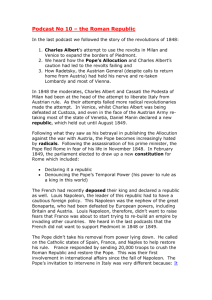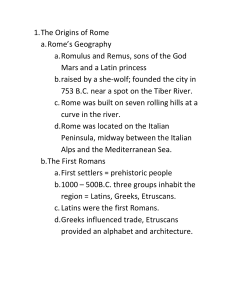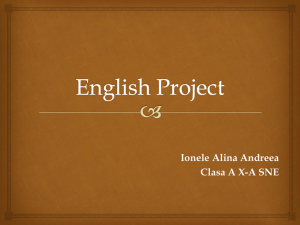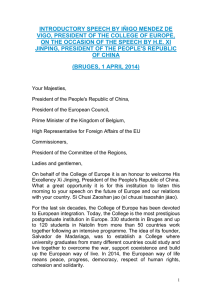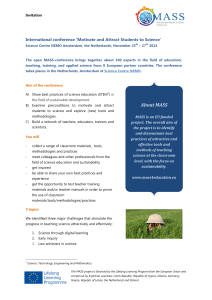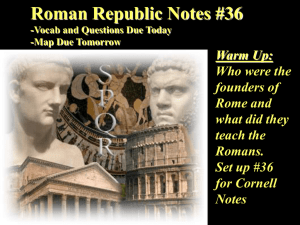The Roman Republic and the lessons of 1849-9
advertisement
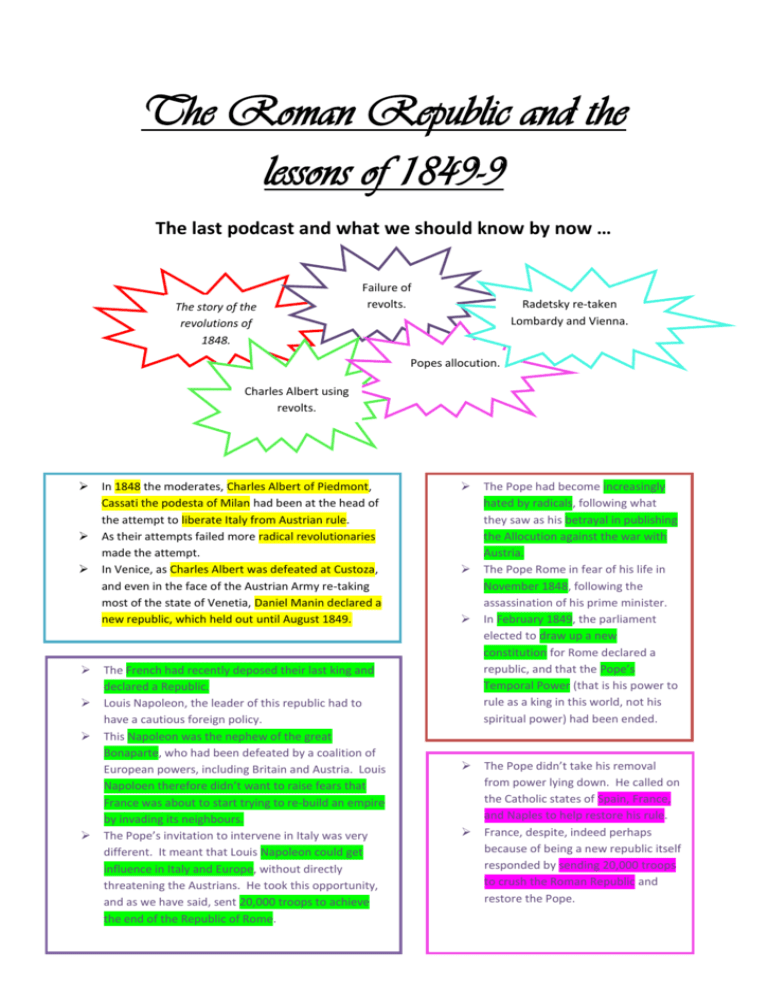
The Roman Republic and the lessons of 1849-9 The last podcast and what we should know by now … The story of the revolutions of 1848. Failure of revolts. Radetsky re-taken Lombardy and Vienna. Popes allocution. Charles Albert using revolts. In 1848 the moderates, Charles Albert of Piedmont, Cassati the podesta of Milan had been at the head of the attempt to liberate Italy from Austrian rule. As their attempts failed more radical revolutionaries made the attempt. In Venice, as Charles Albert was defeated at Custoza, and even in the face of the Austrian Army re-taking most of the state of Venetia, Daniel Manin declared a new republic, which held out until August 1849. The French had recently deposed their last king and declared a Republic. Louis Napoleon, the leader of this republic had to have a cautious foreign policy. This Napoleon was the nephew of the great Bonaparte, who had been defeated by a coalition of European powers, including Britain and Austria. Louis Napoloen therefore didn’t want to raise fears that France was about to start trying to re-build an empire by invading its neighbours. The Pope’s invitation to intervene in Italy was very different. It meant that Louis Napoleon could get influence in Italy and Europe, without directly threatening the Austrians. He took this opportunity, and as we have said, sent 20,000 troops to achieve the end of the Republic of Rome. The Pope had become increasingly hated by radicals, following what they saw as his betrayal in publishing the Allocution against the war with Austria. The Pope Rome in fear of his life in November 1848, following the assassination of his prime minister. In February 1849, the parliament elected to draw up a new constitution for Rome declared a republic, and that the Pope’s Temporal Power (that is his power to rule as a king in this world, not his spiritual power) had been ended. The Pope didn’t take his removal from power lying down. He called on the Catholic states of Spain, France, and Naples to help restore his rule. France, despite, indeed perhaps because of being a new republic itself responded by sending 20,000 troops to crush the Roman Republic and restore the Pope. After the pope fled Rome, the city was led by Guiseppi Galletti, and after the republic was declared in February 1849, but a triumvirate (a group of three), the most memorable of which was Mazzini himself. The revolutionary government introduced a number of laws which although they only lasted as long as the republic did, really showed how radical it was. They abolished the macinato, the tax on grinding corn, which the peasants hated paying. Press Censorship was also brought to an end, and land that had been owned by the Church was also re-distributed. Mazzini In April 1829 the French landed their 20,000 troops near Rome. Their fight to the city itself was not easy. The defence of Rome was led by Garibaldi, and it took until the end of July 1849 for the city itself to fall to the French Army. Garibaldi earned himself the status of hero in the defence, and in the march out of Rome and across the Appenine mountains, during which his wife died. Both the Roman and Venitian republics lasted a relatively short time. The Venetian Republic ended in August 1849. Their impact was in the way that they created a legend, an example to those who wanted change, and in the way that the Roman republic in particular was brought to an end. For Martin Clark, the revolutions were ‘local’, and not ‘national’ in character – that is, apart from Mazzinians, what most wanted were local changes. Piedmont wanted to expand, the Milanese wanted the Austrians out, the Venetians wanted a new Republic of St Mark, and the Sicilians wanted independence. Mazzini alone was agitating for a united Italy. Clark also points out how difficult it was to get the peasants involved. Where they had taken part in 1848 ‘they were usually inspired by purely local issues’. “They wanted land near their own villages, not a united Italy” (60). So the biggest effect of 1848 is that the fancy ideas for Italian liberation that had been floating about before hand were shown to be unrealistic. After 1848 the progress towards unification was at first based on gains, even very small gains, made in the real world, rather than hair brained schemes. However, just to make things really interesting, the hair brained schemes of Garibaldi did then make things move at an amazing pace, as we’ll discover in the weeks to come. Giuseppe Garibaldi For Clark the most important lesson was that “Italy could not in fact go it alone” (61) – Piedmont had tried to defeat the Austrians not once, but twice. The Roman Republic had been defeated by a coalition of French and Austrian forces. This meant that change in Italy could only come as part of a wider shift in the balance of power in Europe – and that would only happen if Austria was no-longer the super power it was in 1815 and continued to be in 1849.
